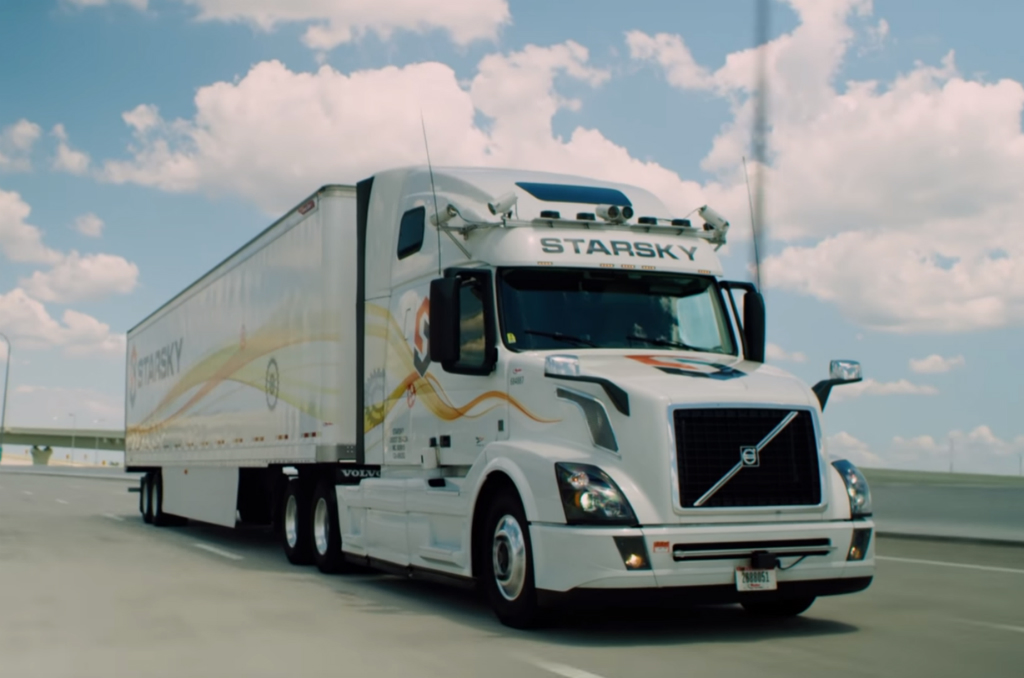Starsky Robotics has reached another milestone on its road to releasing driverless big rigs on Florida highways.
In its most recent speed test, Starsky Robotics claims to have set the speed record for an unmanned truck, reaching 55 mph on a closed stretch of the Lee Roy Selmon Expressway near Tampa.
“The fact that we’re getting these things done when much bigger teams haven’t yet is pretty thrilling,” Stefan Seltz-Axmacher, the founder and CEO of Starsky Robotics, told The Drive. “Being the first to drive at highway speed is another sign that we are closest to actually solving the primary problem in the $726 billion trucking industry.”
While the speed record is undoubtedly a major accolade, the 55 mph milestone has an even more important significance – it’s the planned operating speed for Starsky’s uncrewed semi-trucks.
Seltz-Axmacher’s primary goal of getting drivers out from behind the wheel doesn’t mean he’s running out to eliminate the human element.
“Our approach is taking the person out of the truck and have them working remotely to make high-level decisions while the truck is on the highway,” Seltz-Axmacher told Freight Waves. “To be honest, I don’t think that a super-computer can be built that is smarter than a truck driver.”
The San Francisco-based startup’s big rigs aren’t fully autonomous, instead using a teleoperation system where remote drivers navigate the trucks on every road that isn’t a highway.
“We’re focused on making a truck drive without a person in it,” Seltz-Axmacher explained to The Drive. “Because of that focus we’ve been able to develop a highly reliable SAE Level 2 system and a highly reliable teleoperation and supervision system, and it turns out that’s all you need.”
In order to keep the company financially viable while pursuing its autonomous driving goal, TechCrunch’s Kirsten Korosec reported that Starsky Robotics has secretly been operating a traditional trucking business that’s generating revenue and leading to key partnerships.
“The decision to have a trucking business interact with the real trucking world in parallel with developing the robotics piece is a necessary part of building a longstanding business in the space,” Reilly Brennan told TechCrunch.
Brennan, who’s a general partner at Trucks VC, the first institutional investor in Starsky Robotics, added that other companies in the driverless space should follow the Starsky playbook of creating a well-connected business first.
“The interaction with the market, particularly in logistics, is vital,” Brennan said. “They need to have a business on day one, not on day 720.”
Starsky wants to have 25 autonomous big rigs on the road by 2020. However, for the goal to be accomplished, the company needs to scale its traditional trucking operations to at least 100 semis.
Seltz-Axmacher said that brokers his company works with have been receptive to driverless tech and are ready for it to take off.
“A lot of the concern that people might have is that this is a technology-averse industry and might not be willing to accept self-driving trucks has proven not to be true,” he said.

William is the Managing Editor at FloridaInsider.com. His years of experience in journalism, broadcasting and multimedia include roles as a Writer and Web Producer. He graduated from Florida International University with a Bachelor of Science and Communication.

